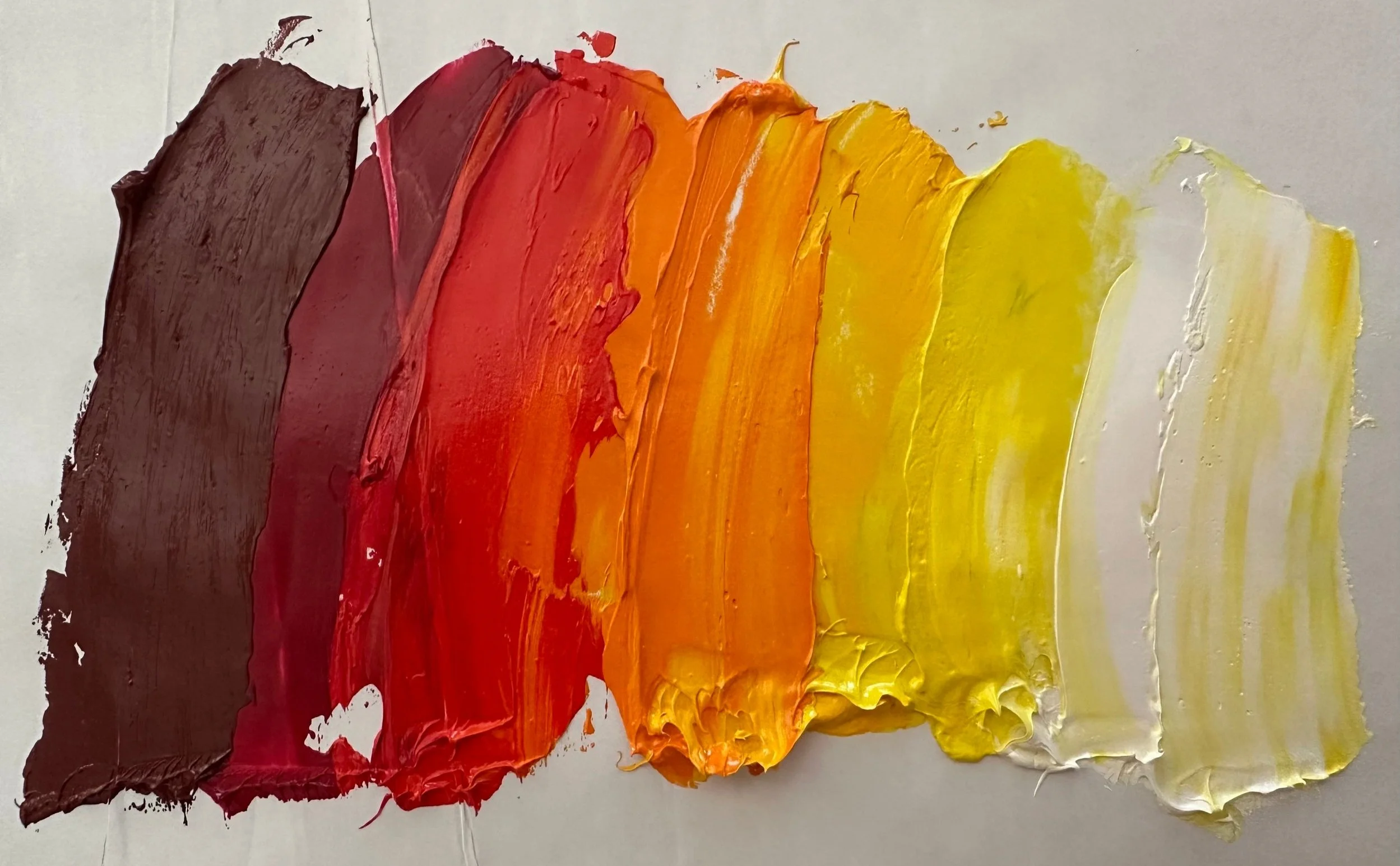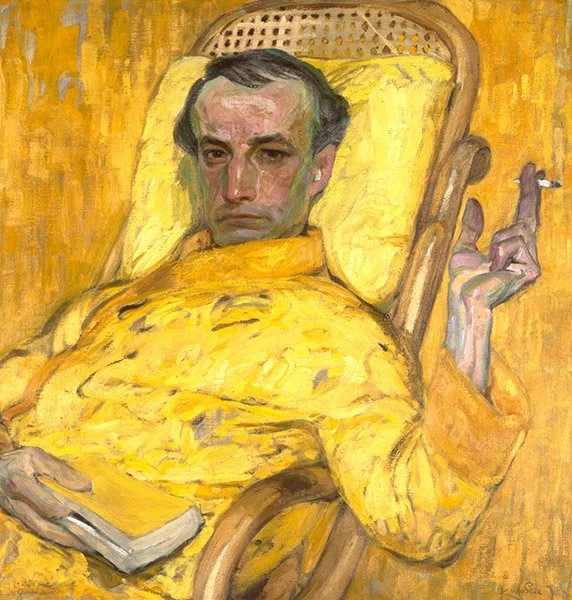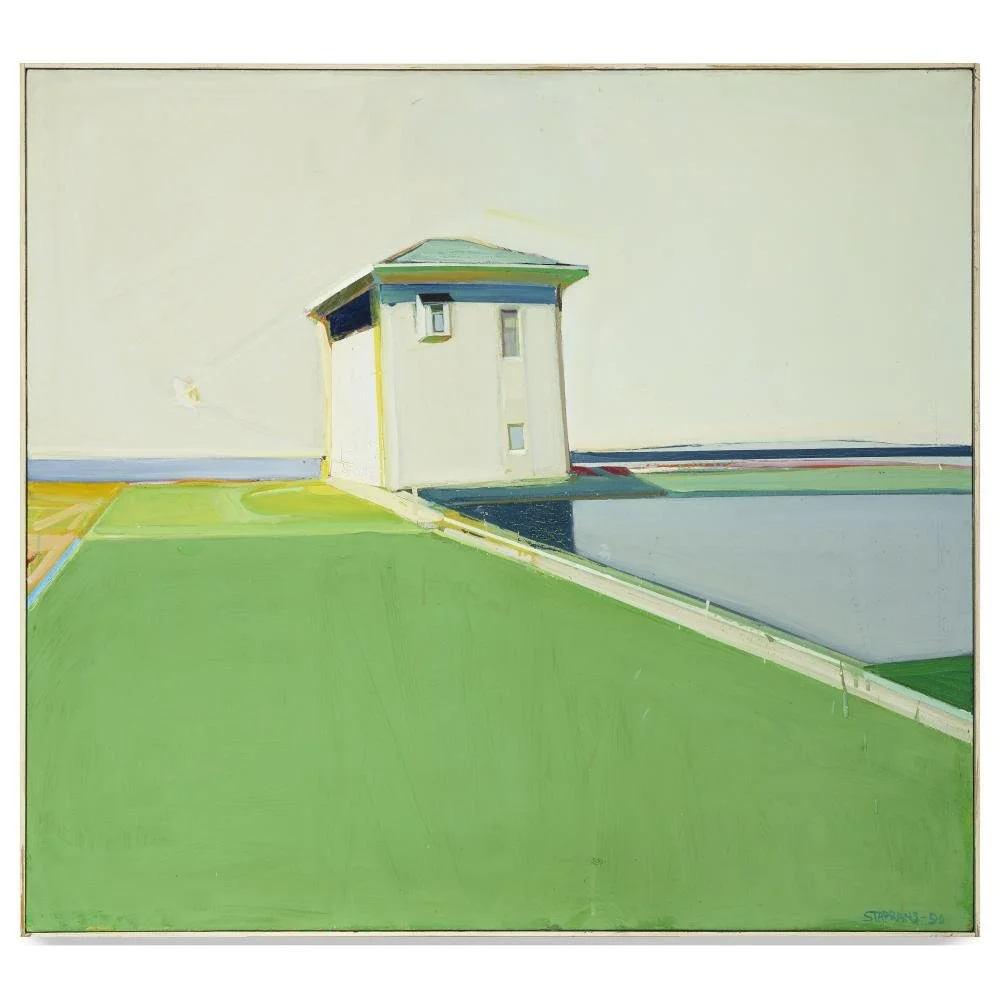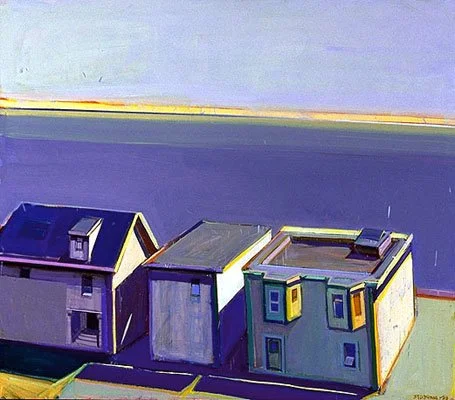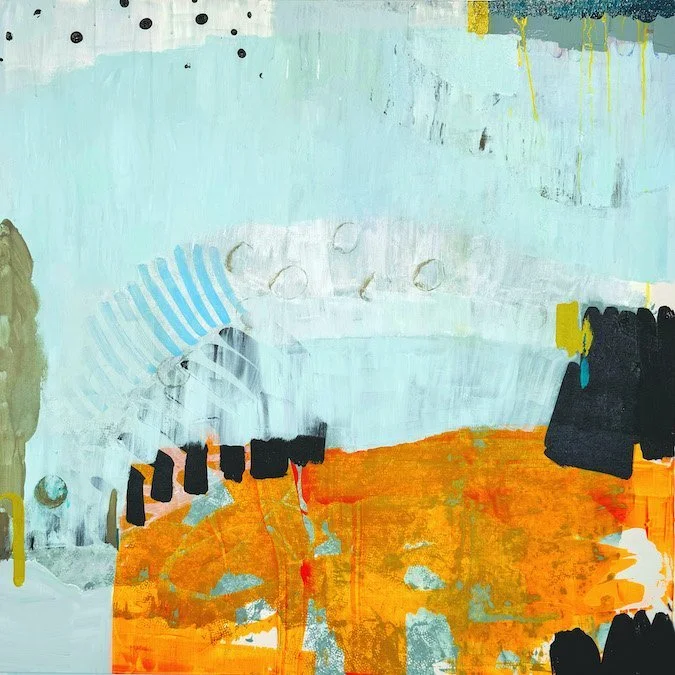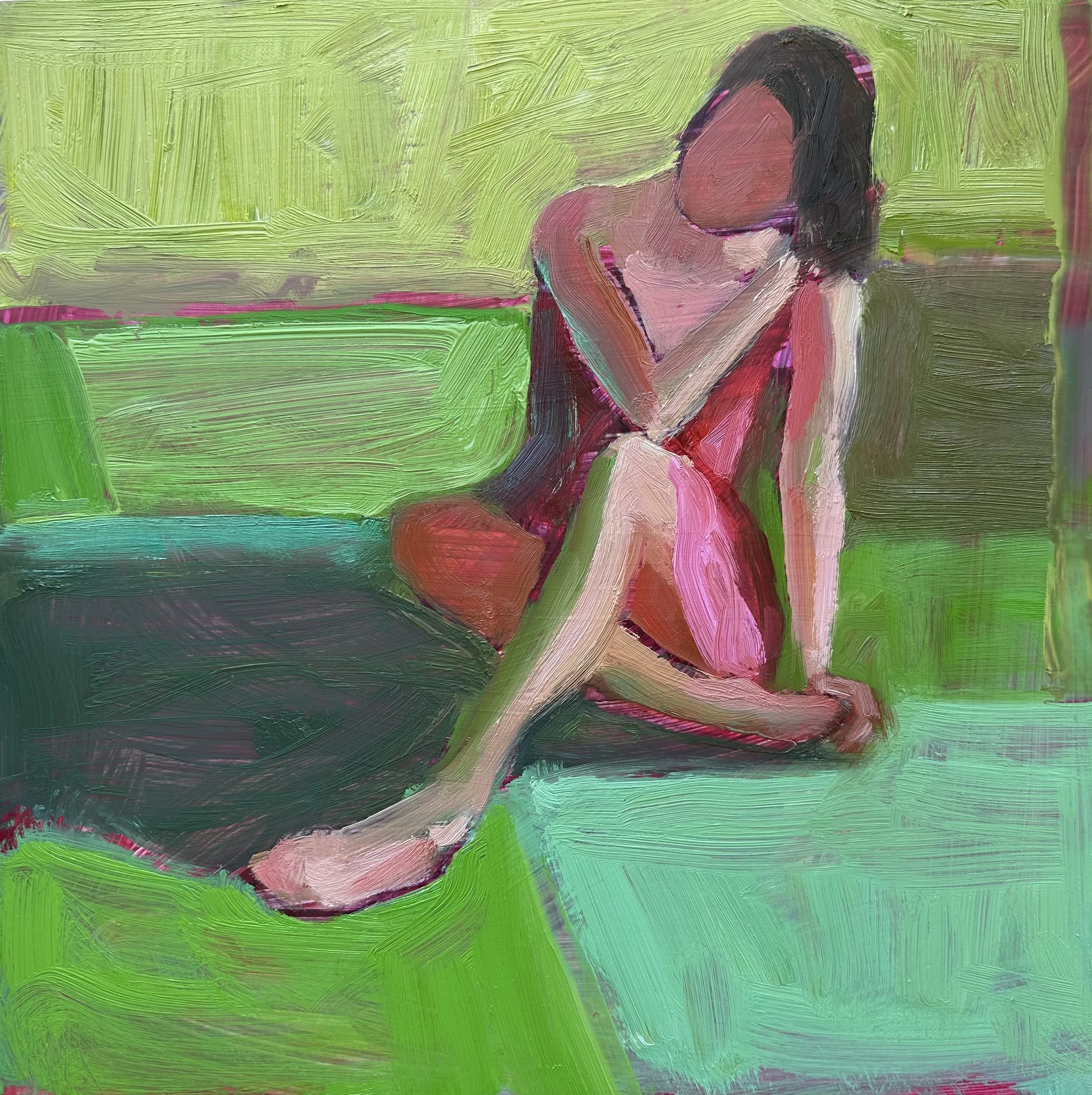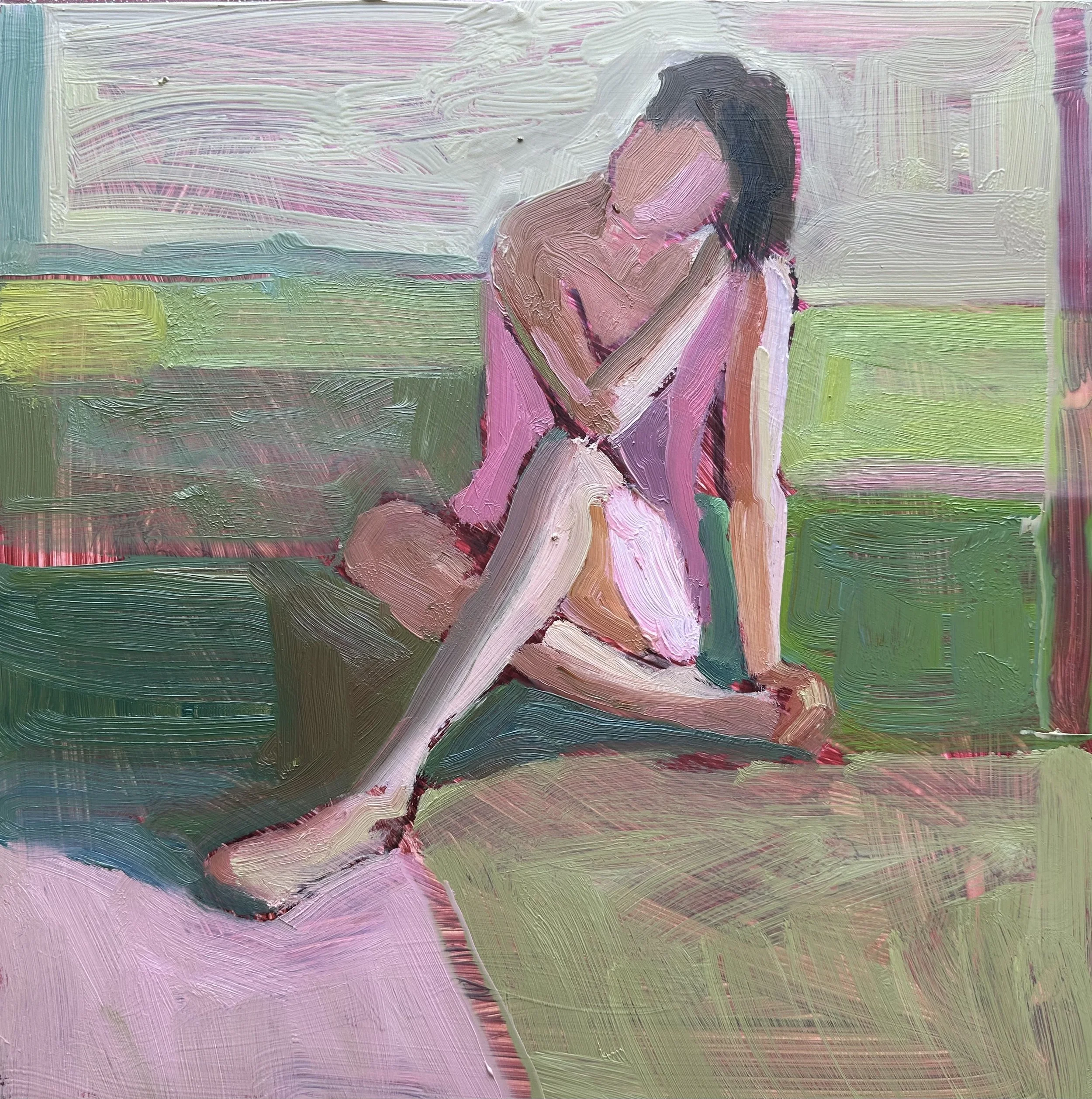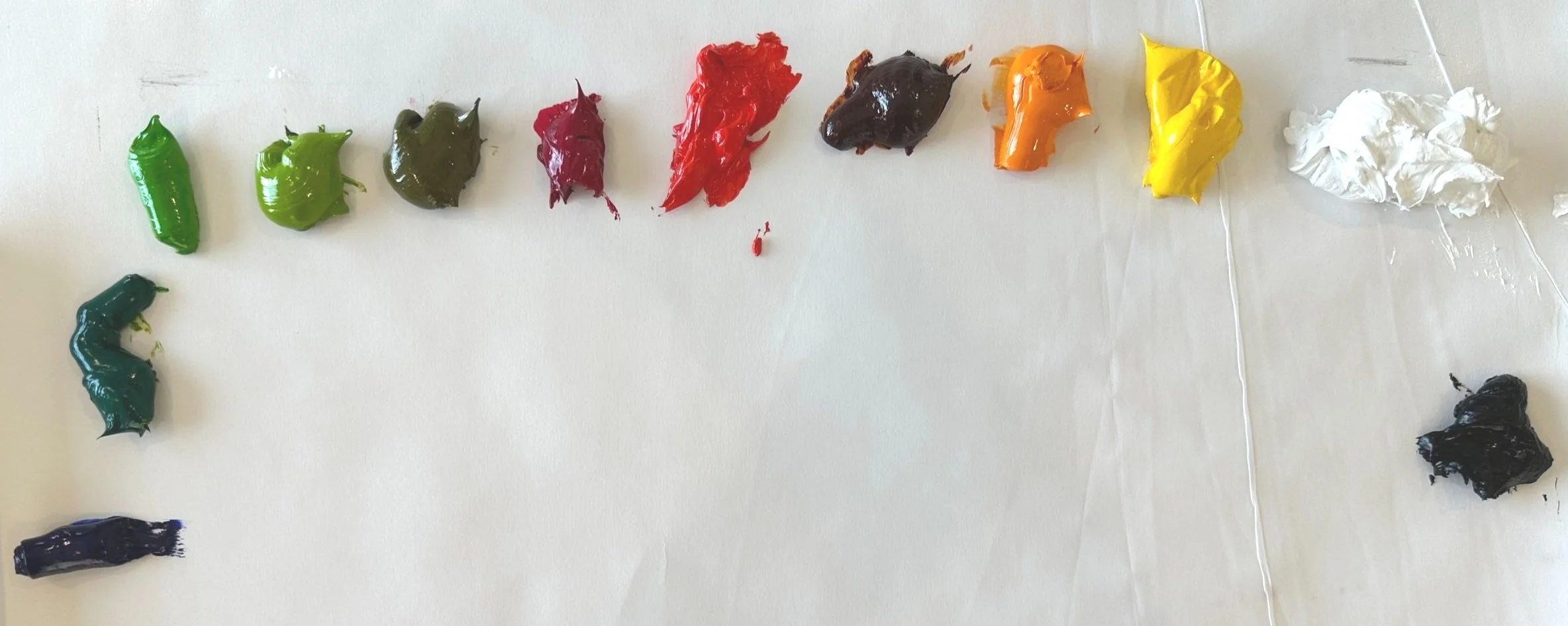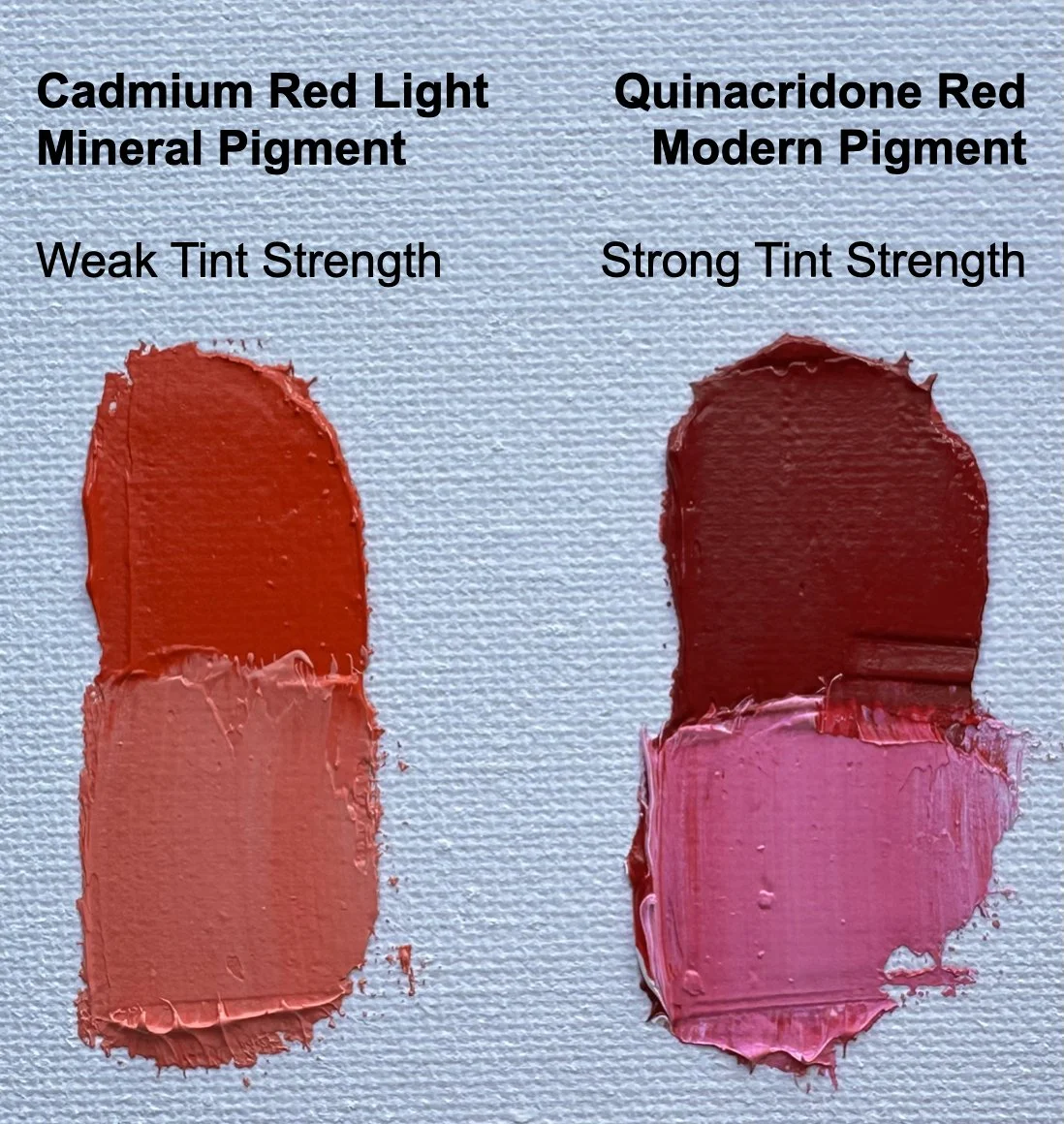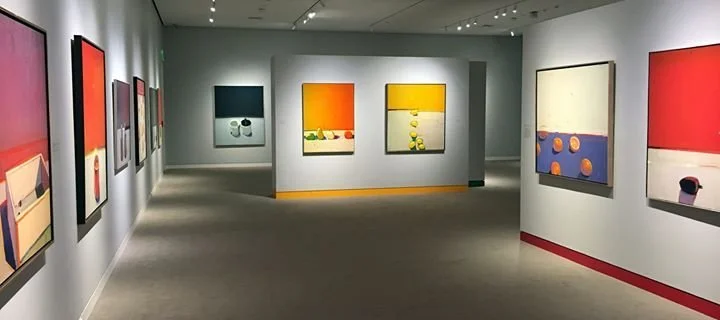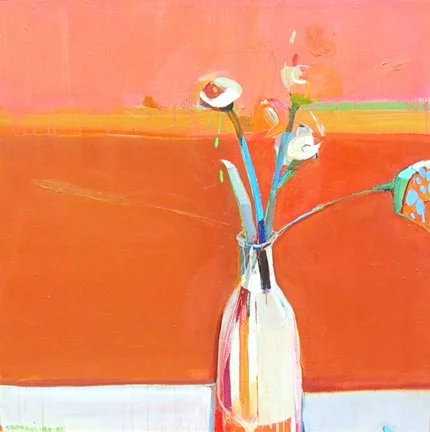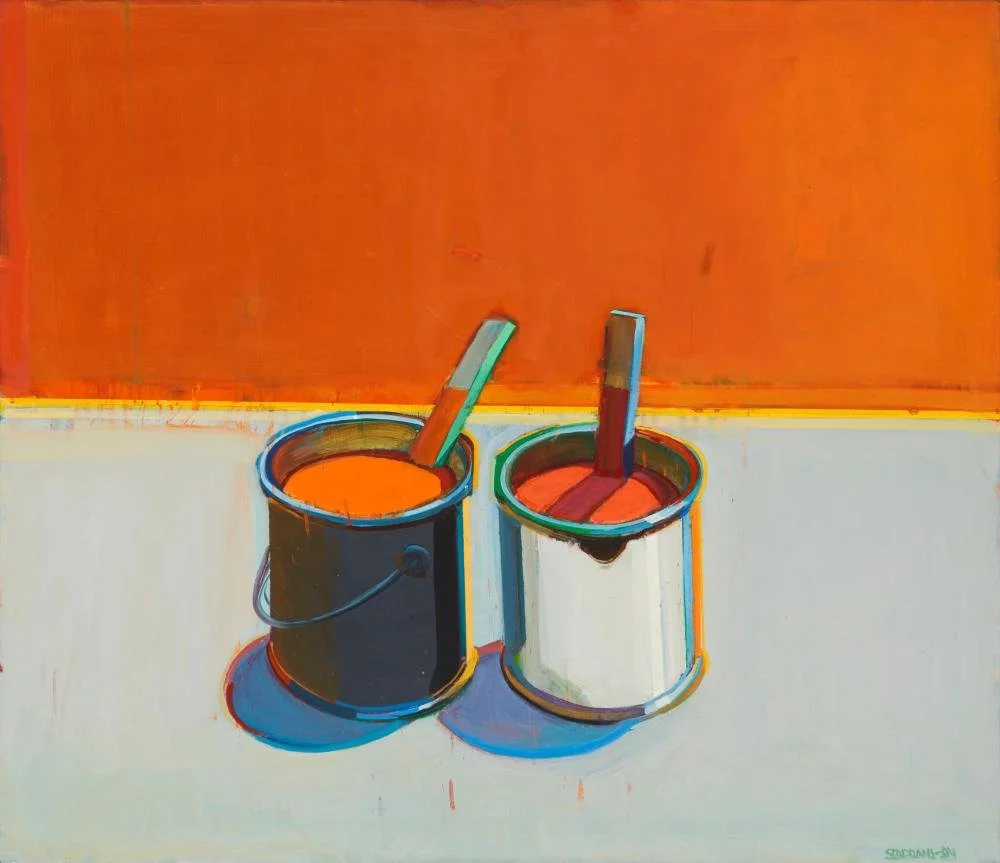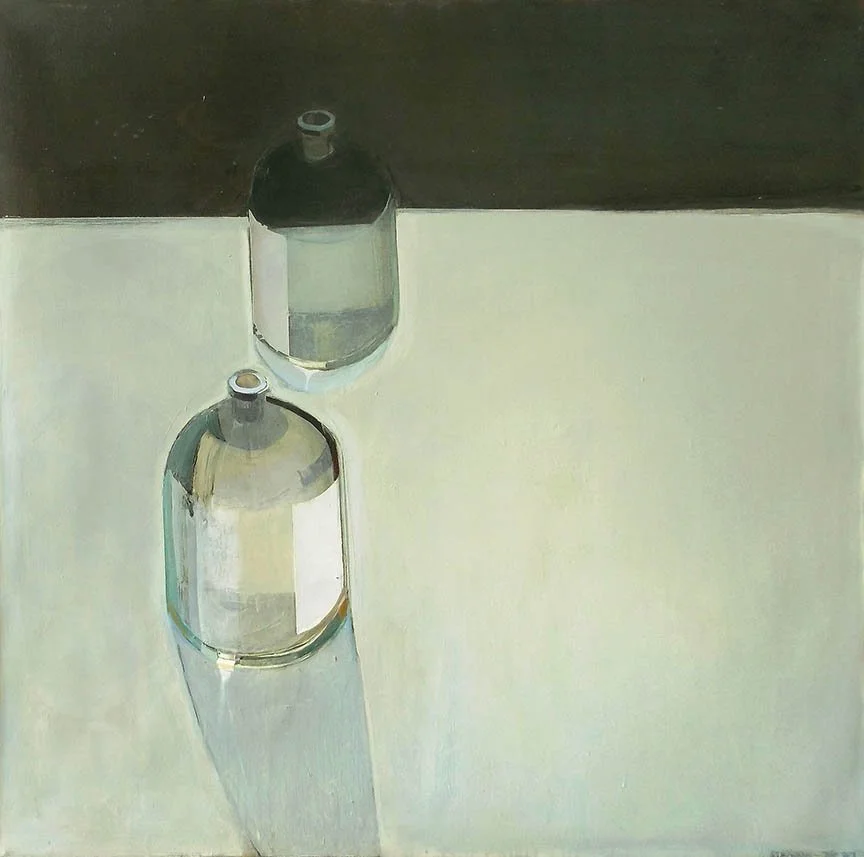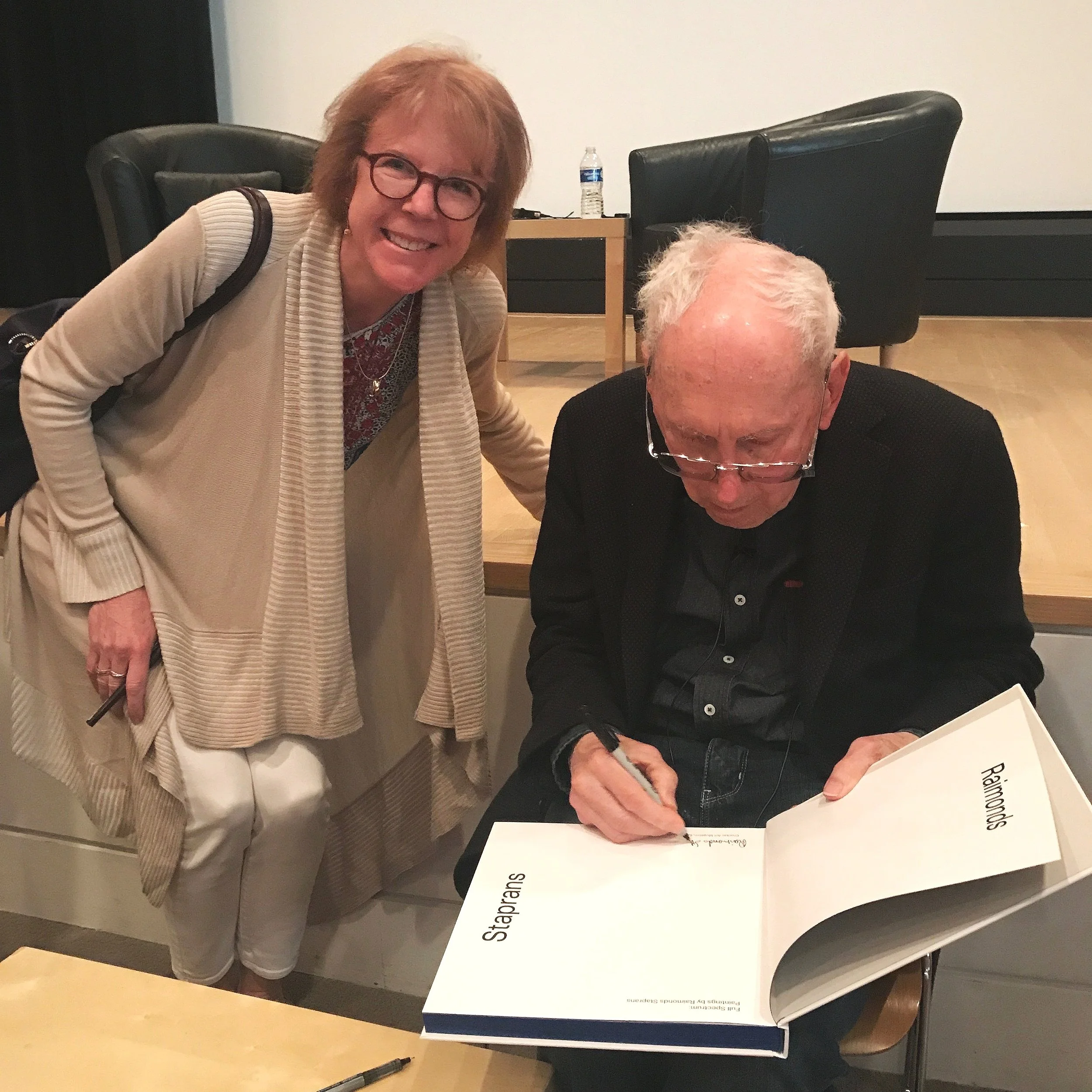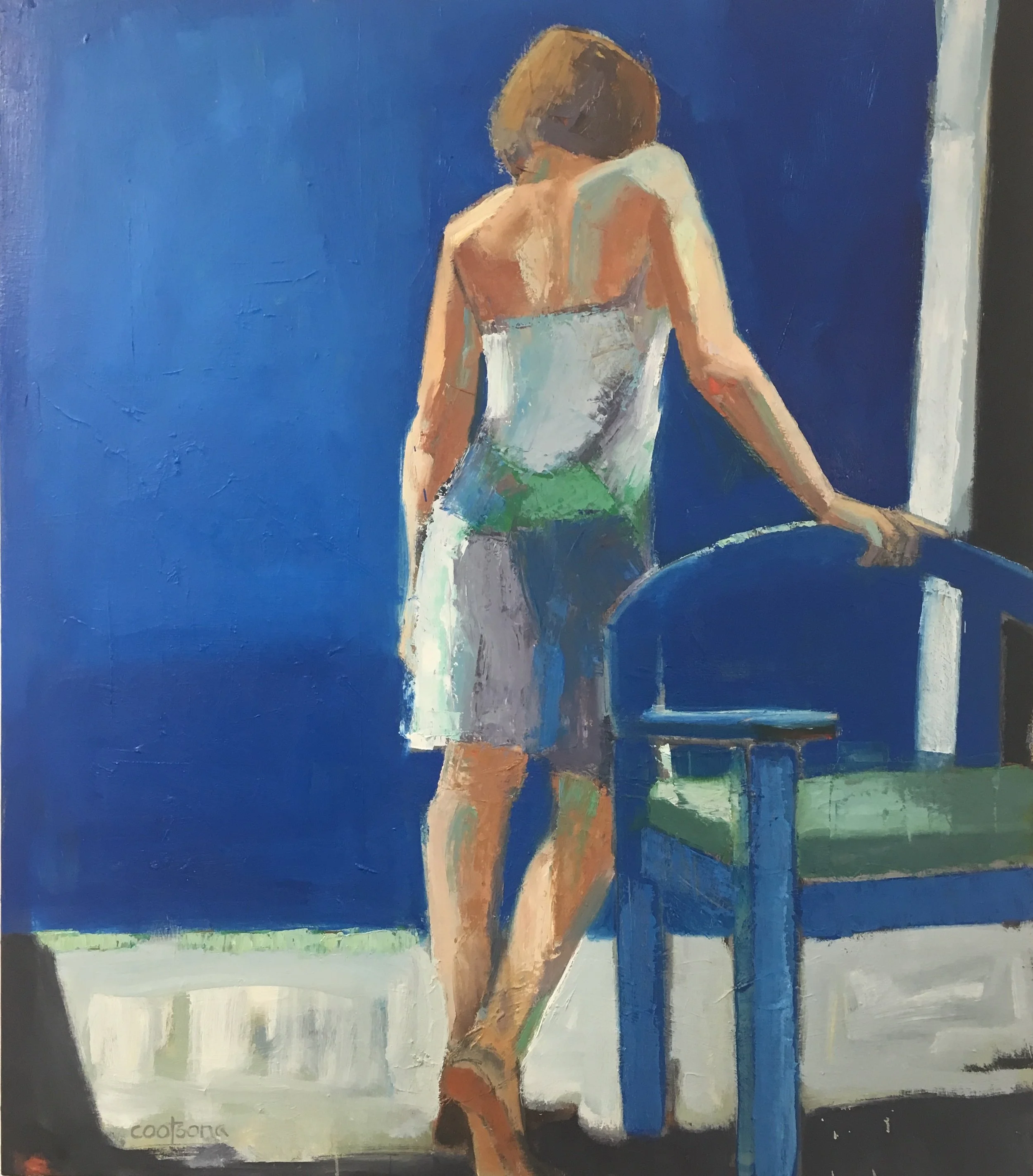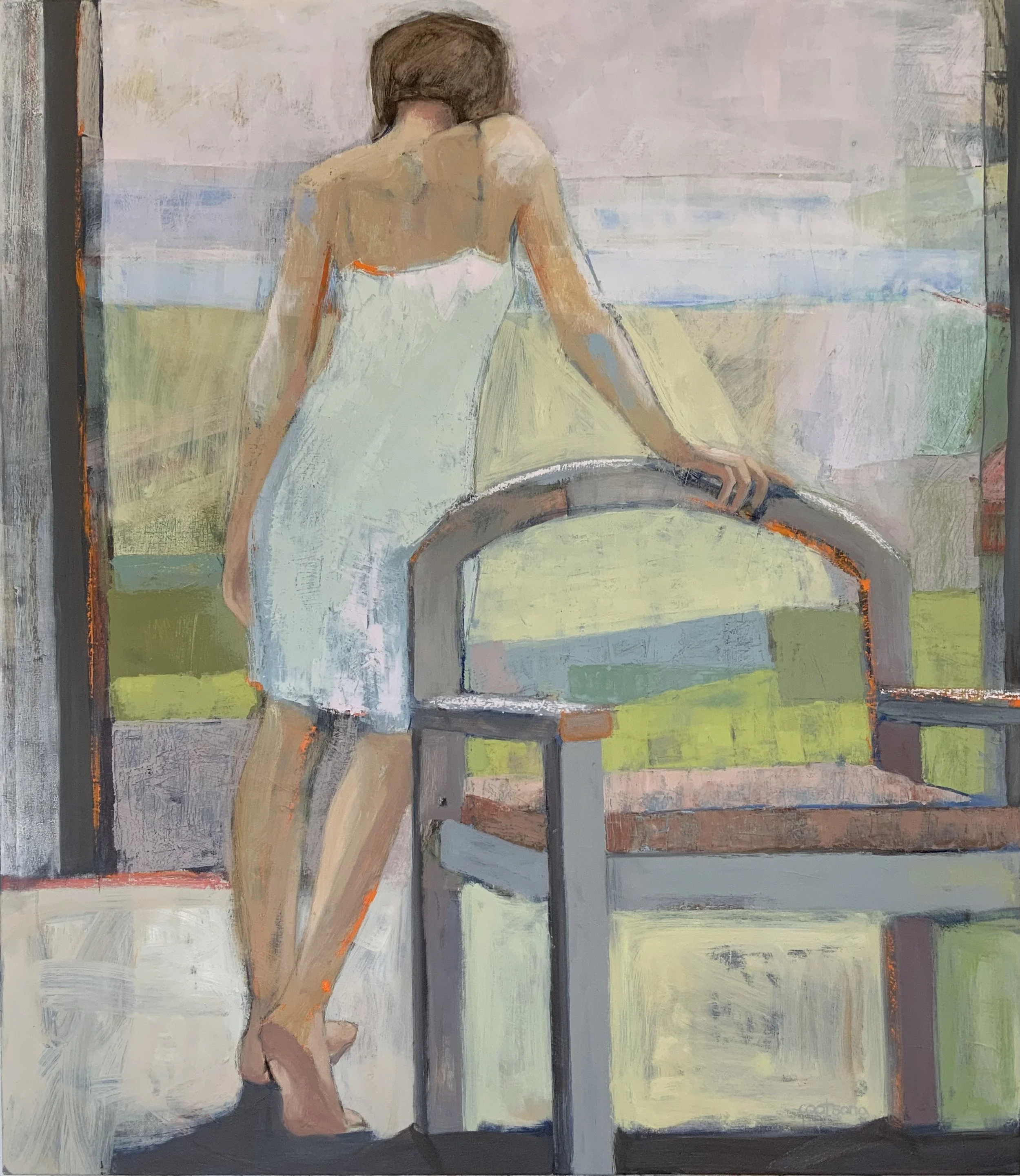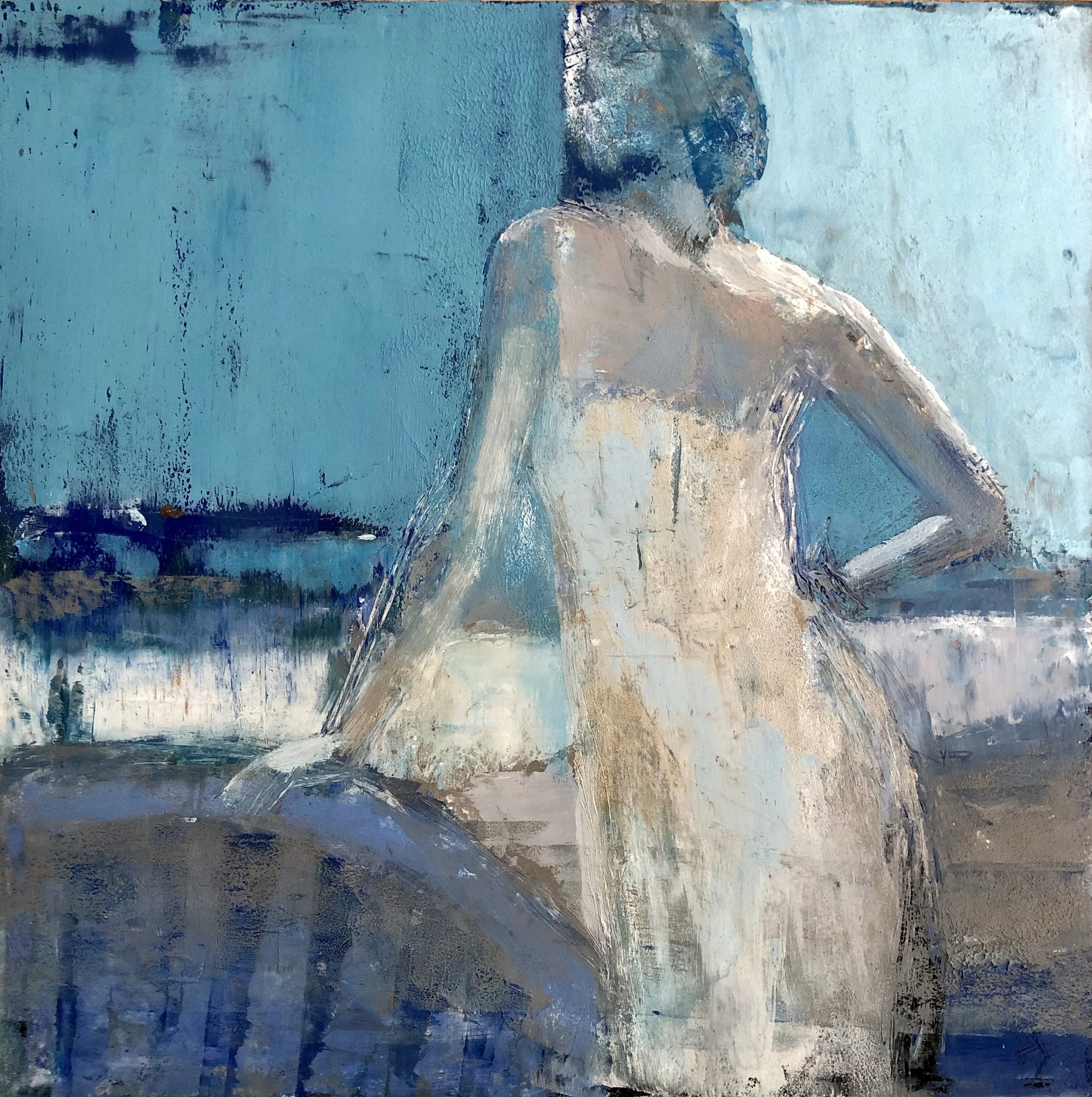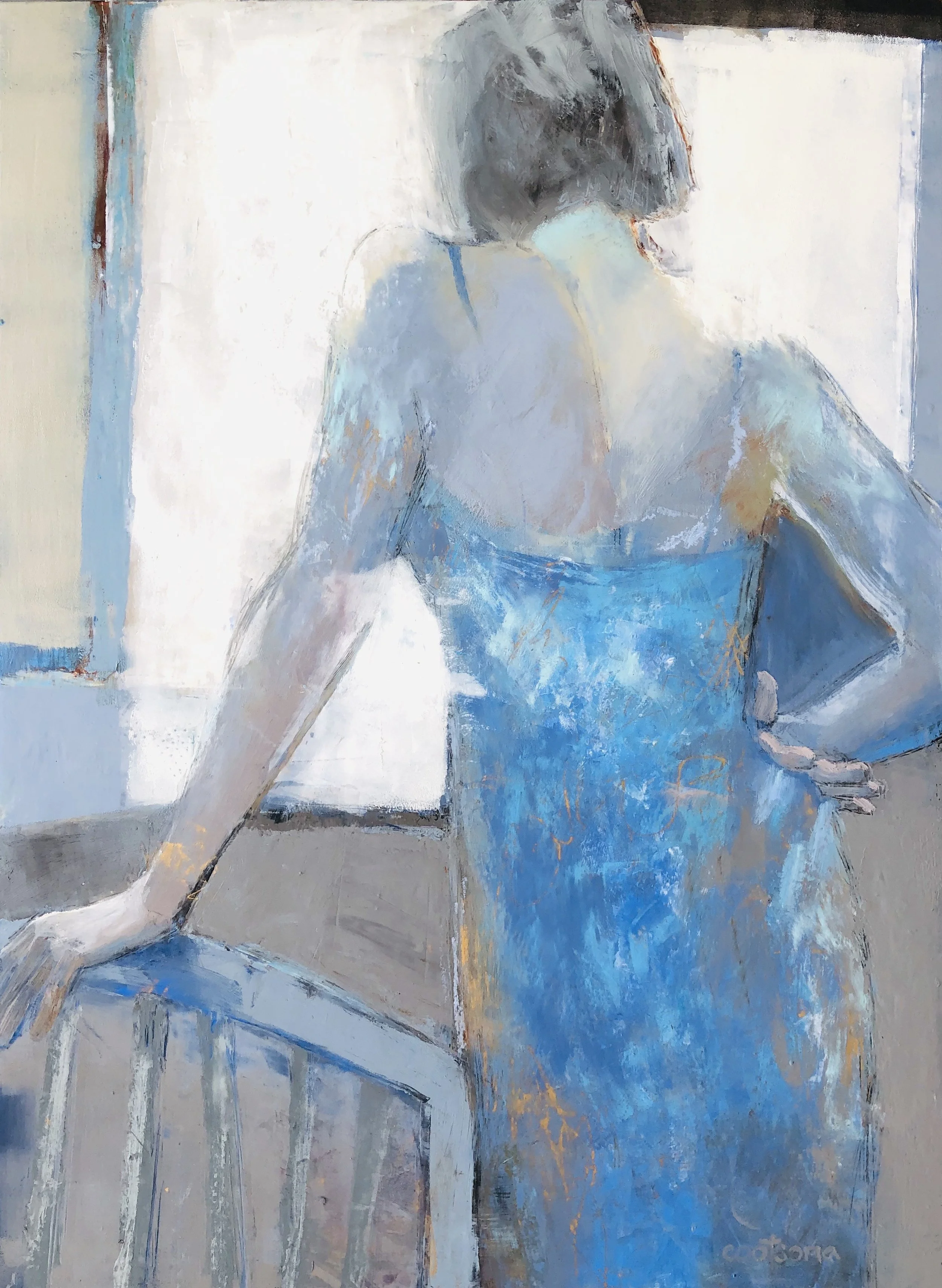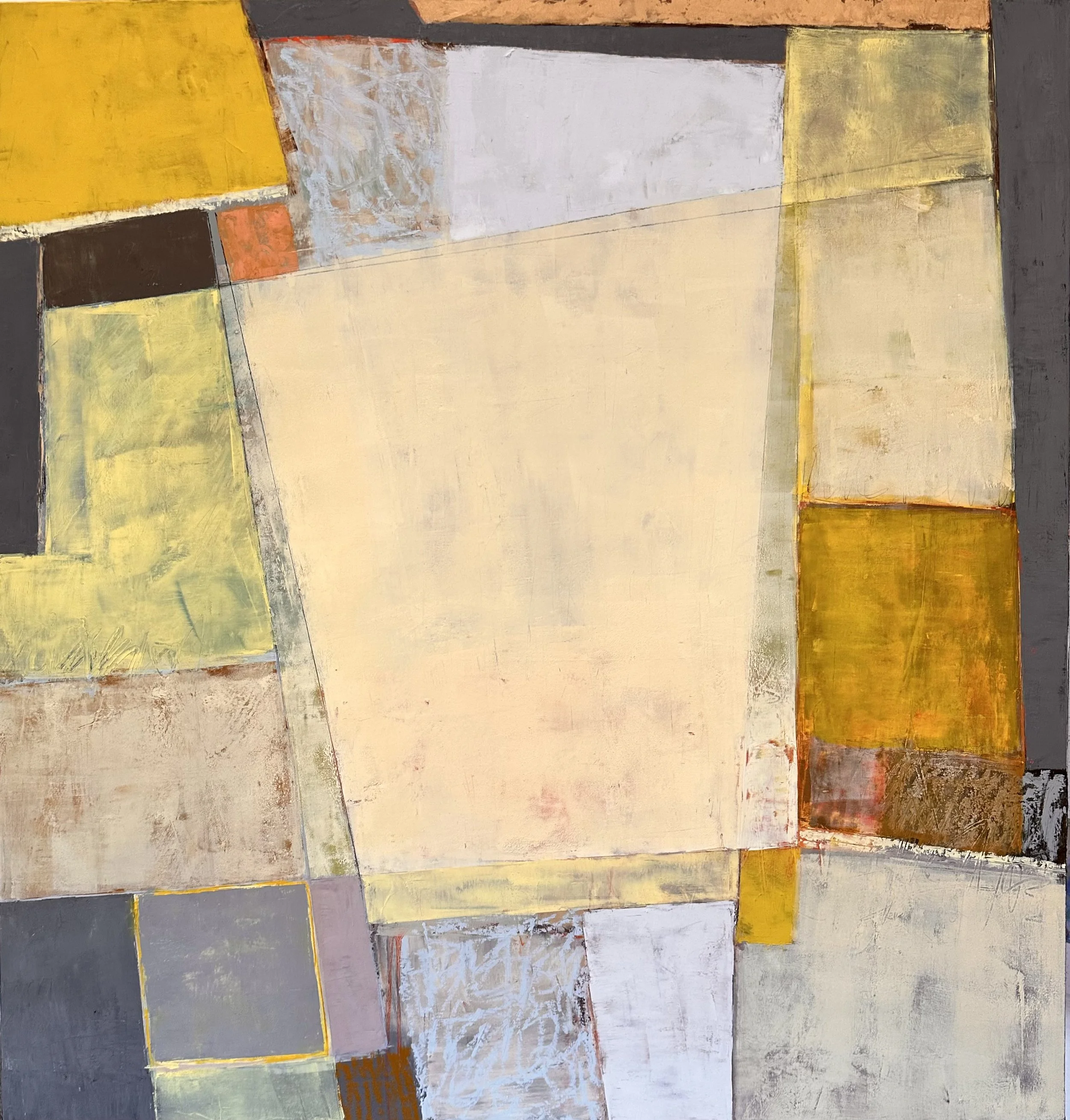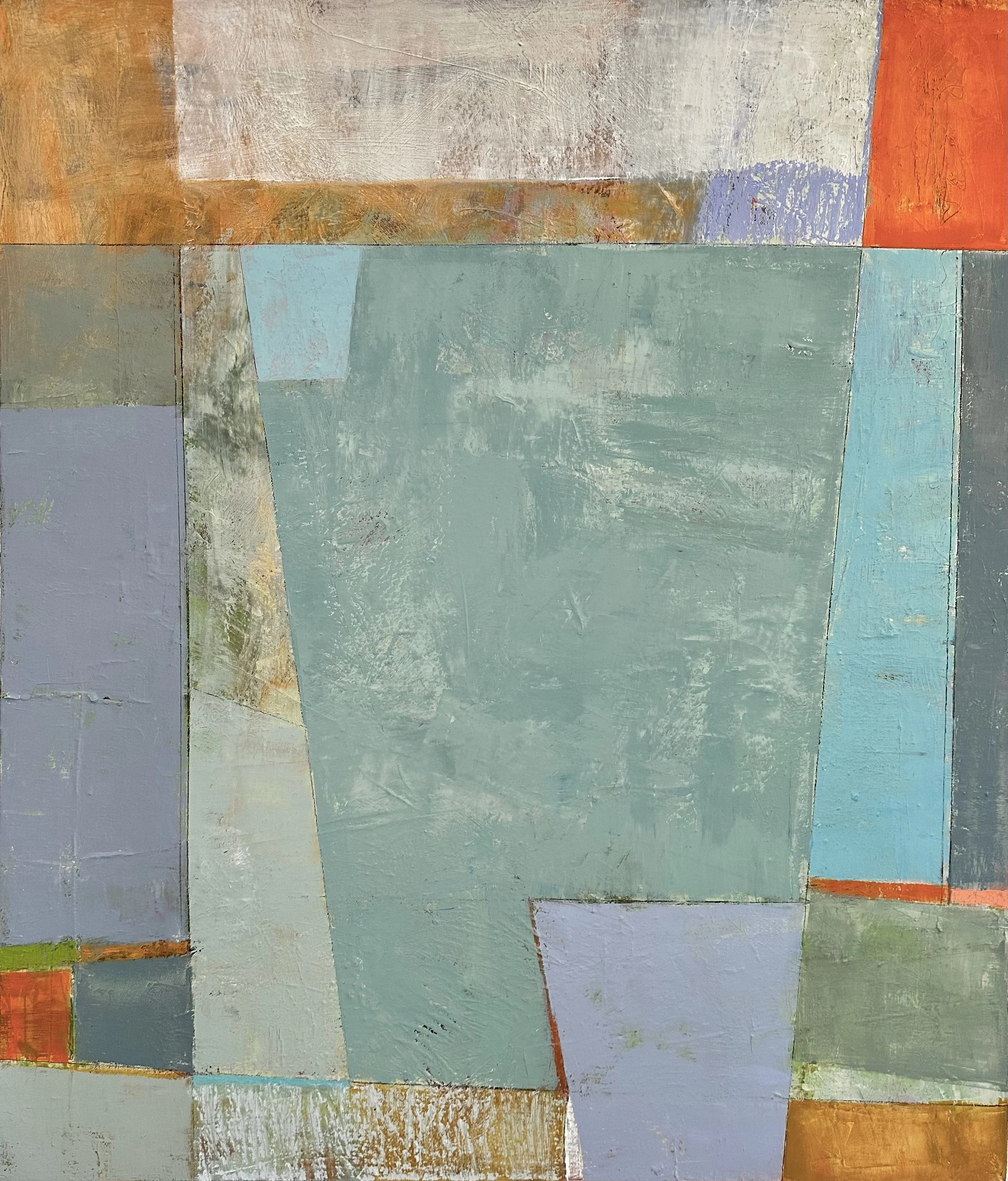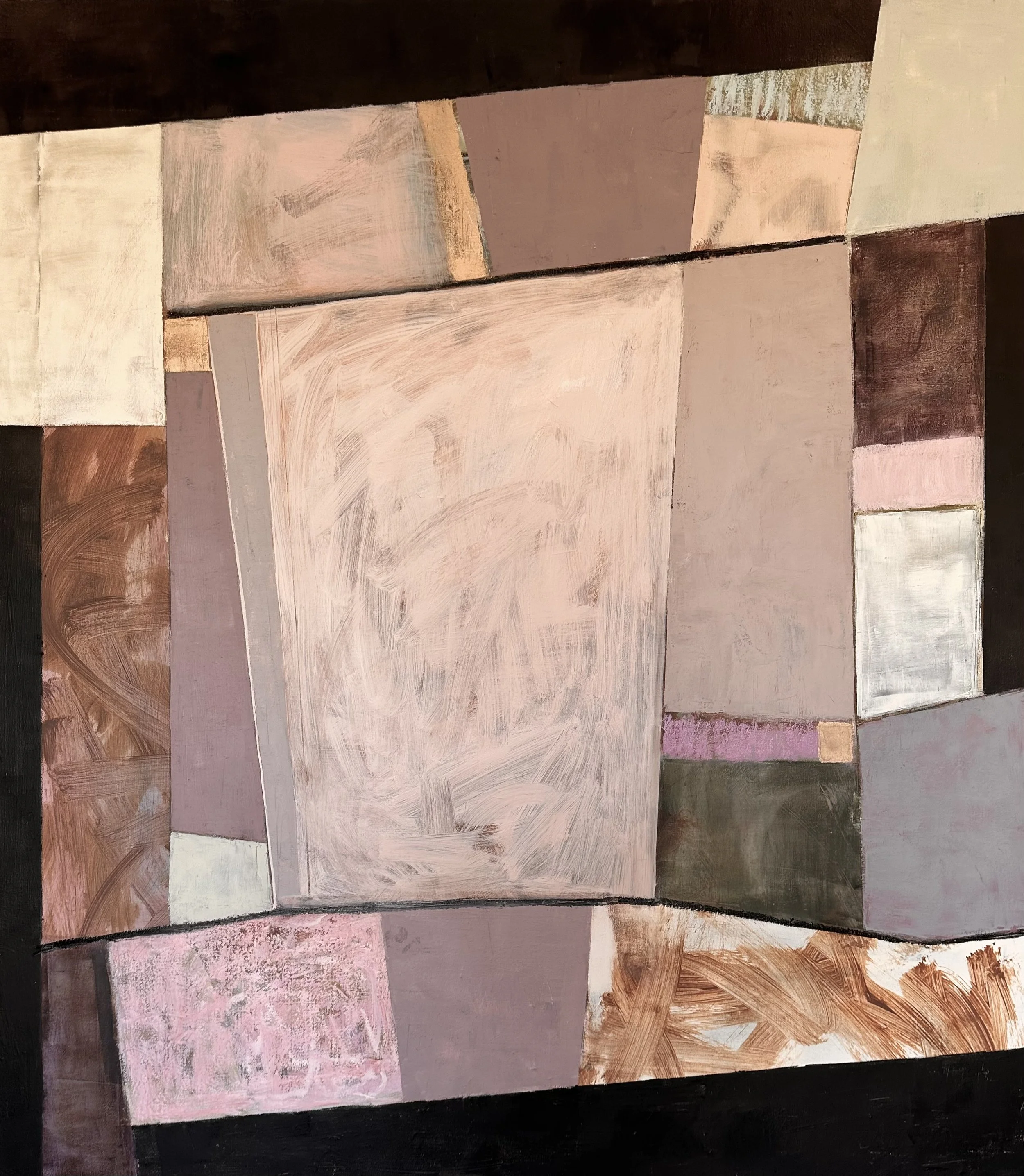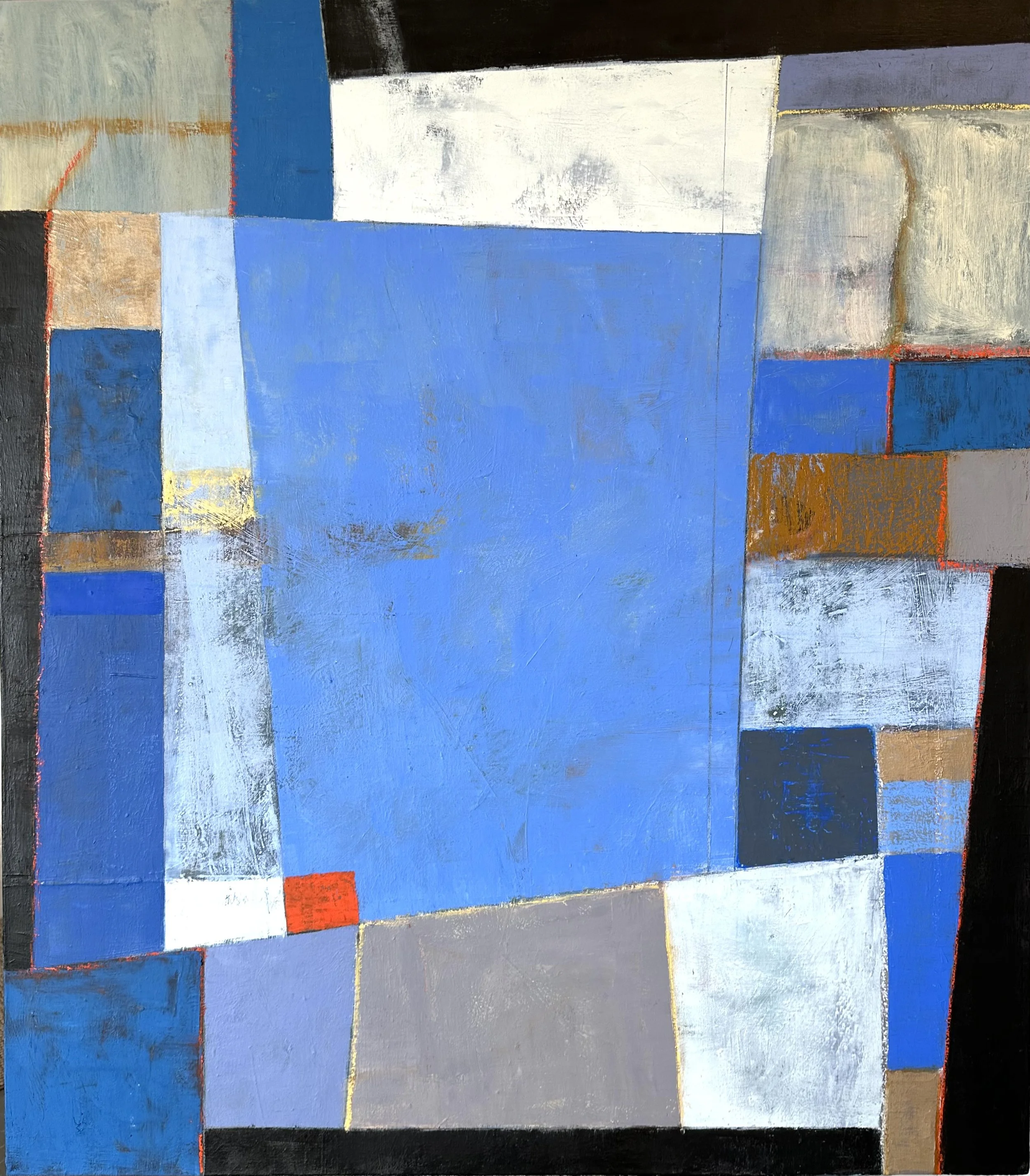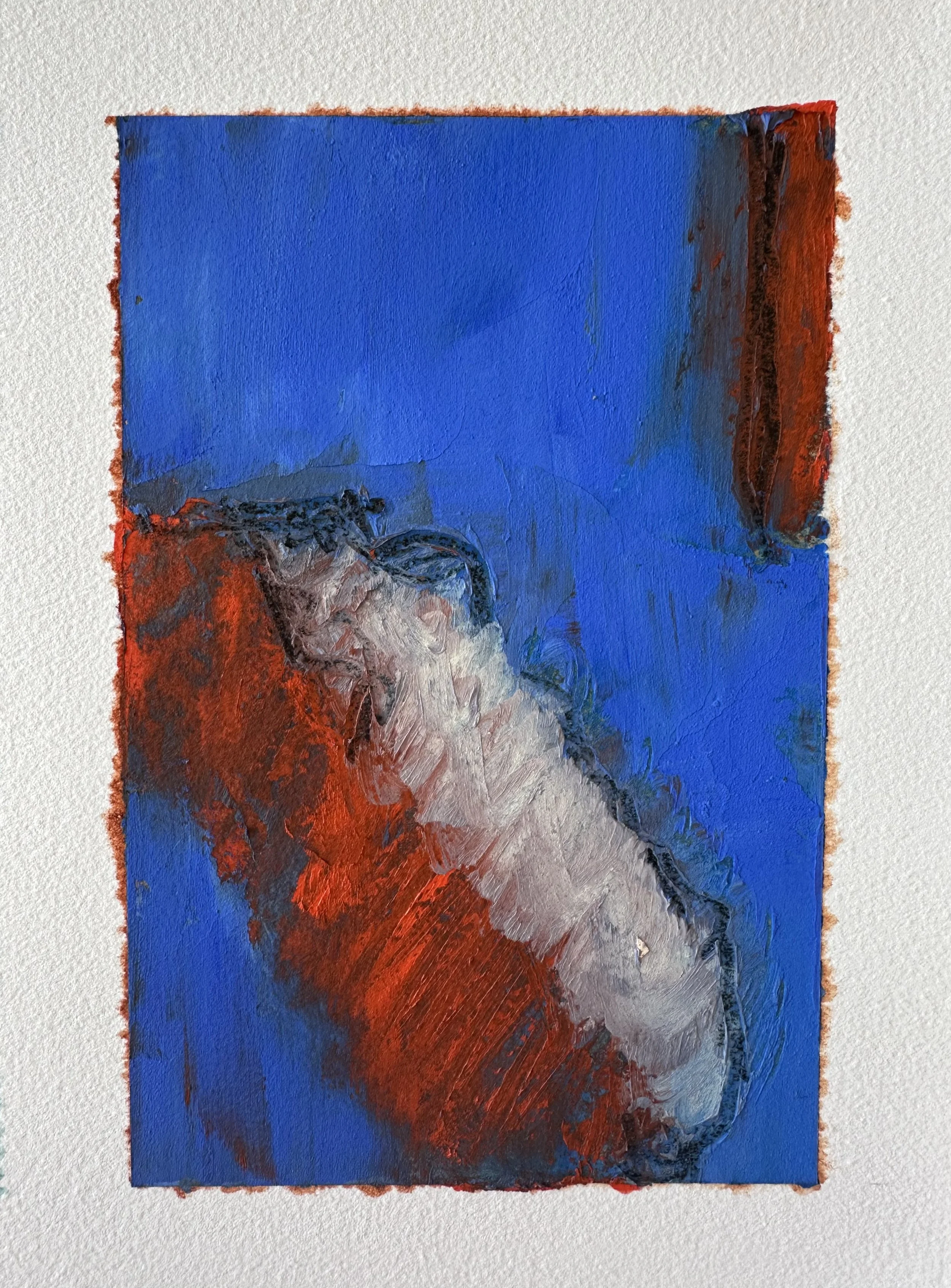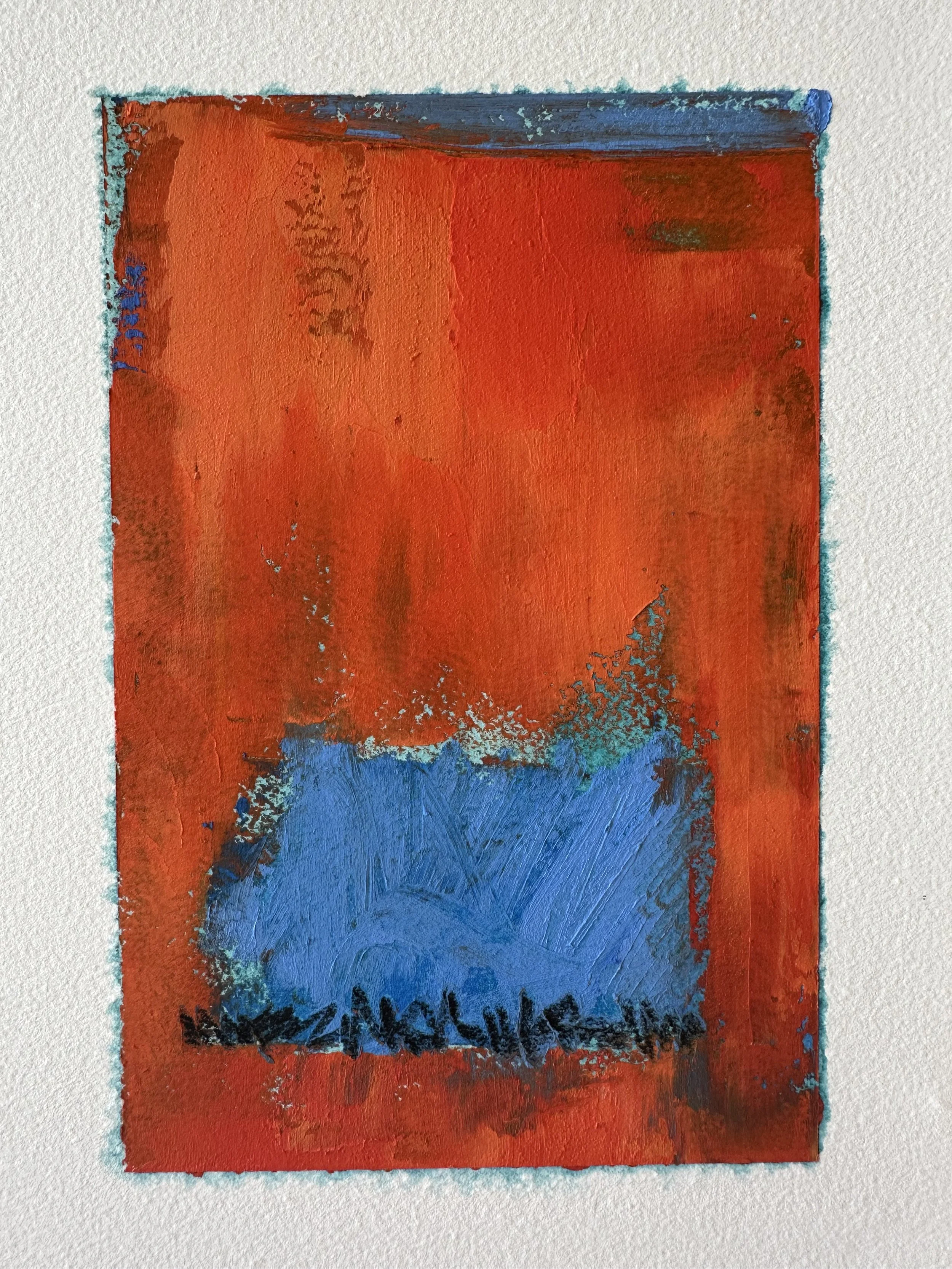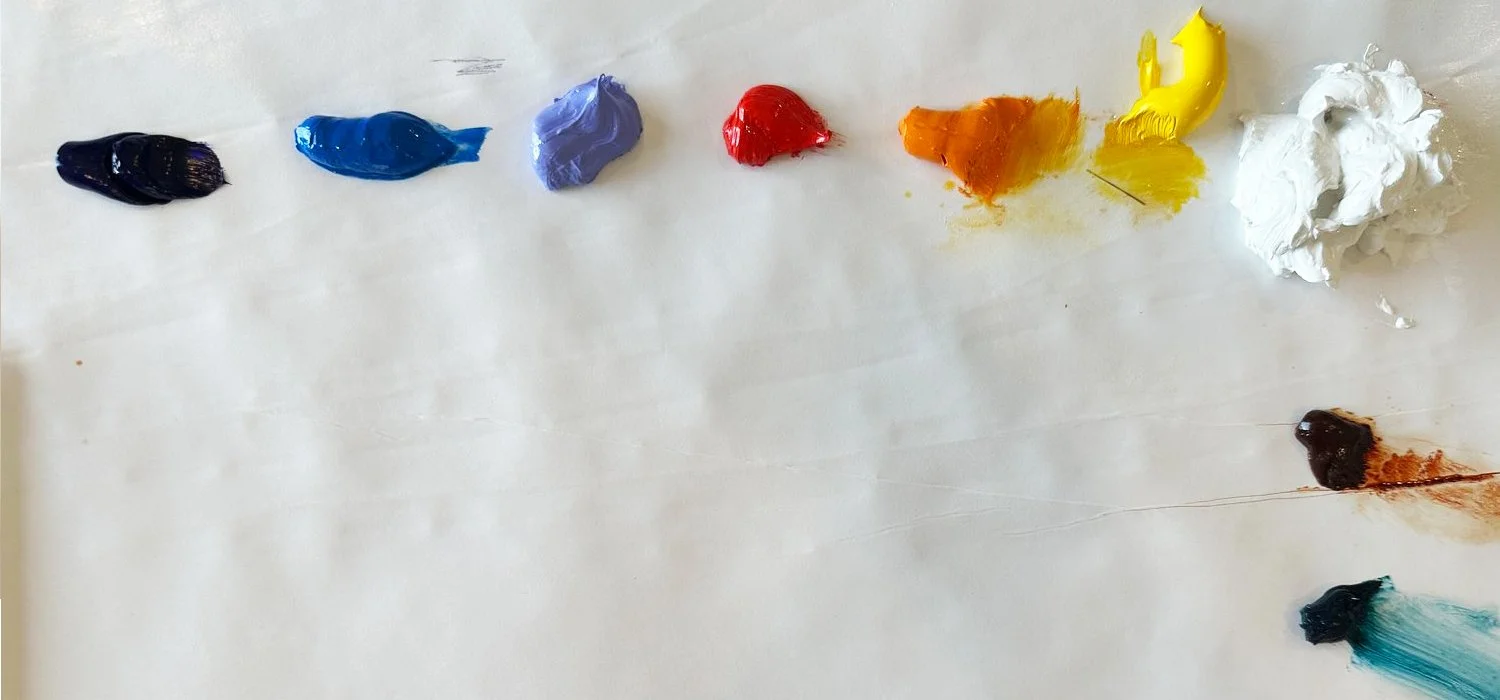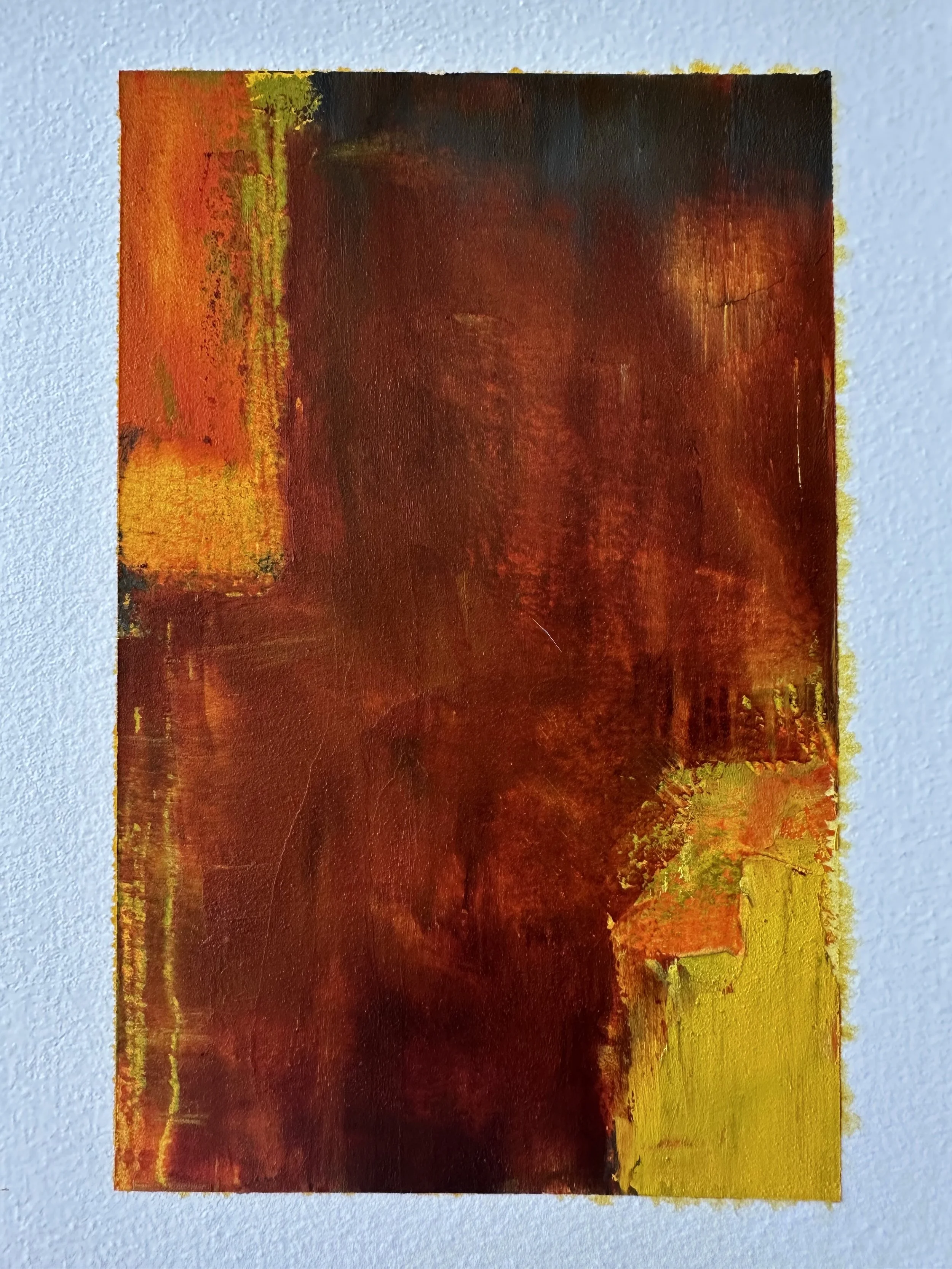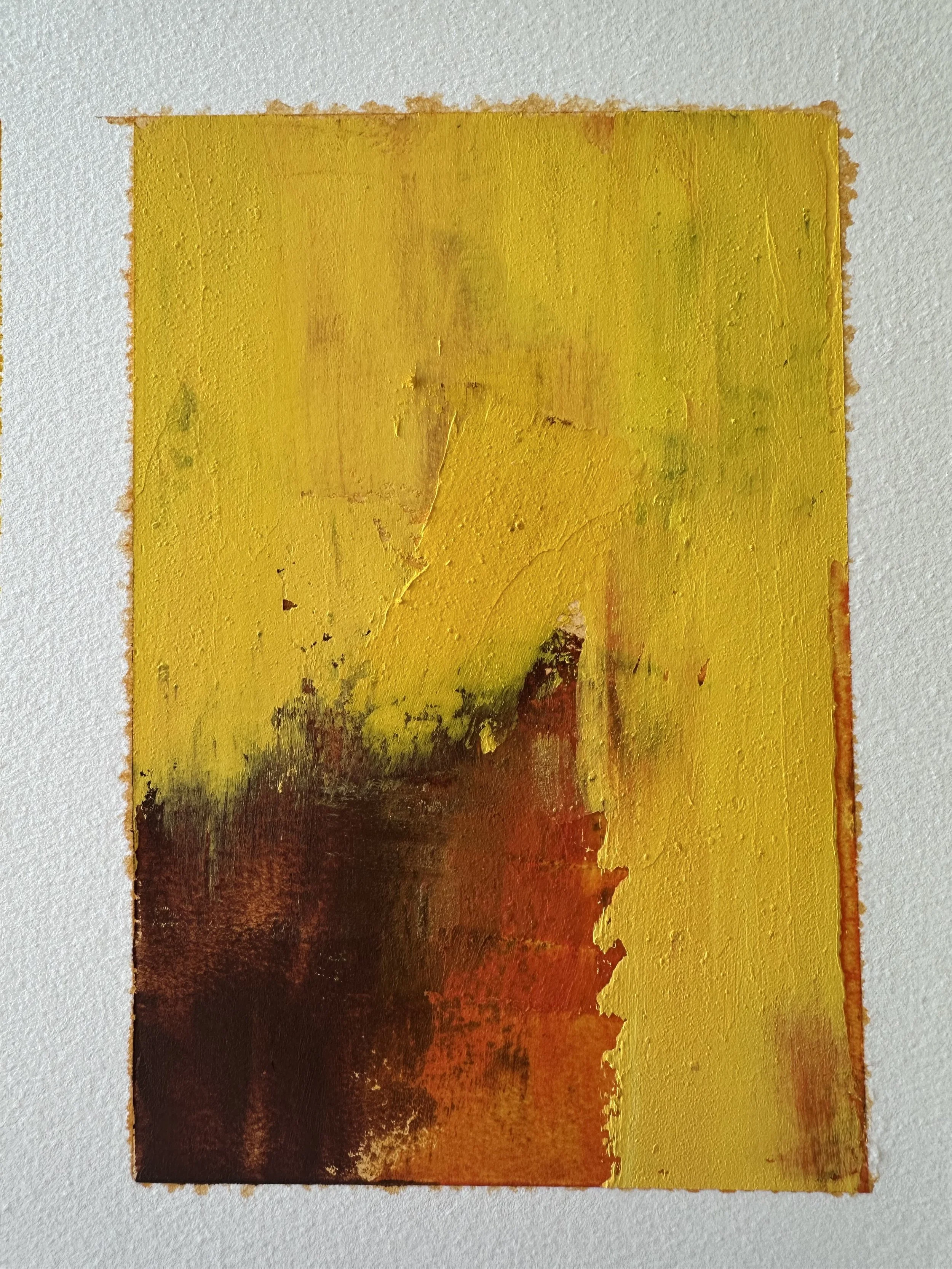Lesson one
FOCUSING YOUR COLOR CHOICES
Create Limitations in Your Color Choices and Open Your World to New Possibilities
MONOCHROMATIC and COMPLEMENTARY Color Palettes
MONOCHROMATIC PALETTE: uses one HUE and its combinations such as adding white (a tint) or black (a shade) or other colors to neutralize the original hue.
COMPLEMENTARY PALETTE: focuses on colors that are directly opposite each other on the color wheel.
I’m sure that many of you are familiar with these two color palettes, and they may seem very basic, but do you know just how versatile they can be? Working with these very limited palettes can not only strengthen your color knowledge but also produce some rich, rewarding paintings. Let’s look at some artists who create unique, dramatic and rich paintings using these limited palettes.
▸ PASSWORD: COLOR
▸ VIDEO LENGTH: 13:51 minutes
MONOCHROMATIC Palette Gallery
Click on any image to view larger.
COMPLEMENTARY Palette Gallery
Click on any image to view larger.
Important Color Concepts to Remember
All of these concepts can have a big impact in the overall feeling and mood of your limited palette painting.
✶ VALUE
Look at the very dark reds of the Mark Daily Monochromatic in contrast to the Patrick Lee pale reds and how VWLU can significantly change the feel of the painting.
✶ CHROMA
Look at the high chroma (intense/saturated) colors of the Raimond Staprans red and green in comparison to the muted reds and greens of the Wolf Kahn forest in the Complementary Gallery. The chroma creates a completely different mood in each.
✶ COLOR PROPORTIONS MATTER
A complementary painting in yellows and violets, for example, will have a very different feel when predominantly yellow then it will when predominantly violet. See Raymonds Staprans and Patrick Lee in the Complementary Gallery
✶ NEUTRALS MATTER
Neutrals can be included in these two palettes (as in most), and their values and proportions can also shift the feel of the work.
Project One: ONE SUBJECT, ONE PALETTE, TWO PAINTINGS
Watch me create two very different moods with the same image by changing the chroma (color intensity) in each painting.
Red/Green Complementary Palette:
HIGH Chroma · SATURATED Color
▸ PASSWORD: CHROMA1
▸ VIDEO LENGTH: 18:37 minutes
High Chroma Complementary Palette Red/Green
Red/Green Complementary Palette:
LOW Chroma · DE-SATURATED Color
▸ PASSWORD: CHROMA2
▸ VIDEO LENGTH: 15:25 minutes
Low Chroma Complementary Palette Red/Green
Red/Green COMPLEMENTARY Palette
-
Colors listed below (left to right)
Ultramarine Blue
Viridian Green
Permanent Green Light
Yellow Green
Olive Green
Quinacridone Red
Cadmium Red Light
Transparent Red Oxide
Yellow Orange
Cadmium Yellow Medium
Titanium White
Carbon BlackI later added:
Gamblin’s Portland Warm Grey
Gold Ochre
Gamblin’s Gel MediumThe panels had an initial acrylic layer of:
Burnt Sienna
Quinacridone Magenta
Your Turn:
Before beginning this project, read the section below on MINERAL vs. MODERN colors/pigments. After filming this demo I realized that having a firm understanding of the difference between the two will help with this project.
✶ Using either a Monochromatic or Complementary Palette, create two paintings of the same (or similar) subject matter using the same palette. I used a Red/Green complementary palette, however feel free to use any monochromatic or complementary palette of your choice. I have listed the colors I used for your reference but they are certainly not required.
✶ One painting will have more chromatic and “brighter” colors. You may still use neutrals here but color will be more dominantly high chroma.
✶ The second painting is to be more muted with low chroma colors. A more muted palette implies more neutral colors. Note that adding white (in acrylics and oils) will generally dull your colors as well (except with some modern pigments such as Pthalo and Quinacridone which retain their high chroma).
MINERAL VS MODERN PIGMENTS: What’s the story?
MINERAL COLORS
Made from pigments of earth and metals. The first first of these earth pigments go back to cave drawings. These earth pigments include colors such as Yellow Ochre, Raw Umber, and Venetian Red. Metal pigments were developed during the Industrial Revolution and gave the Impressionists a new palette to work with. Metal pigments include colors like the Cadmiums, Cobalts and Ultramarine Blue.
MODERN COLORS
Developed at the end of the 1800’s with the creation of organic chemistry and pharmaceutical dyes. Modern pigments are made in laboratories and are known for their transparency and very strong tinting strength. They tend to have long odd names like Quinacridone and Phthalocyanine.
Note on ACRYLIC PAINTS
Developed in the 1940s with it becoming available to artists in the 1950’s. These same concepts of tinting strength hold true for acrylic paint as well. Acrylic paints also have far more pre-mixed colors available.
✶✶ IMPORTANT TAKE AWAY ✶✶
Modern Colors have a high tinting strength. This means that when you add white to them (creating a tint) the color stays relatively saturated and bright, or High Chroma. Alternatively, Mineral Colors have a lower tinting strength and when white is added the color dulls and becomes significantly less saturated, or Low Chroma.
GAMBLIN COLOR CHARTS
This PDF shows the different colors of paints from different eras
✶ Classic = MINERAL Colors
✶ Impressionist = MINERAL Colors
✶ 20th Century = MODERN Colors
Click on the button below to view/download this useful color chart.
Want to learn more about the history of paint colors?
Gamblin is the industry expert and shares some great information on their website.
Artist Focus
〰️
RAIMONDS STAPRANS
〰️
Artist Focus 〰️ RAIMONDS STAPRANS 〰️
You’ve seen several of his paintings on this page, Staprans was an amazing master colorist whose color work was brilliant and the results are stunning. His colors look quite saturated at first glance, but if you study his paintings you will see the subtle manipulations of chroma from more muted colors to the high intensity colors. We can learn much from looking at his work. He did have quite an involved process which you can glimpse in this short video where he discusses his creation of blues. There are several more videos on YouTube if you are interested in more of his thoughts. (Fun side note: I was at the talk at the Crocker Museum (on YouTube) where I got him to autograph his book!).
Raimonds Staprans Museum Show
Click on any image to see larger.
It’s always exciting to meet one of your creative “heroes” and see their work on display.
Working in a Series
A series should have visual continuity. The work should “hang together” but not be so repetitive as to be boring.
Click on any image to view larger.
-
I highly recommend that you focus on working in a series, and this course is the perfect time to do it! There are different approaches to working in a series. When I find a gesture or pose that I particularly like in my figurative work, I will re-use it many times in different paintings as you can see in the examples here. This allows me to explore different environments for the figure and then create different moods and emotions while repeating a figure that becomes more familiar with each painting.
-
The important part about a series is that you focus on a concept and explore it for a period of time. Creating a series gives you an intention in your work and also a nice limitation as it narrows down “what you will paint” or your subject matter. It will force you to explore different expressions of your concept, and typically leads to growth in your work.
-
Choose a specific visual theme to explore. This can be very specific or more broad in scope. A few examples would be:
✶ A landscape that you regularly see, such as “Mountains and Sky” or a lake in different seasons or light. It also can be more focused like a singular tree. Monet’s haystacks are an example of this idea.
✶ An item that intrigues you such as a chair in different light or even a series of chairs. A favorite room, flower or flowers, plant or still life.
✶ Think about intimacy of the subject. Remember you can zoom in and zoom out. The closer the subject the more intimate the painting.Choose one or two of the Five Elements of Design to explore.
✶ Explore color with a singular subject matter
✶ A series on texture or pattern for example. These may relate to your medium. Texture with oil and cold wax make a great subject to explore. Pattern and collage with acrylics are a natural combination.Choose a more conceptual topic to explore. This can be a bit hard to define and I recommend it be as specific as possible. Vague concepts are challenging and don’t often work well, such as painting “love” or another emotion. Try to narrow your topic down and to give yourself a framework. Below is an example of a series of mine called Keystone. I am essentially working with geometric shapes and color as puzzle pieces that must fit together in an interesting composition.
-
Additionally, a series is a great way to study color! Staying with one theme, subject matter or topic and exploring different palettes is a perfect way to learn how color affects an image!
Keystone Series
“These paintings speak to my roots in architecture and puzzle solving. Each painting is built with layers of color, texture and an exploration of shapes. Like removing the ‘keystone’ in an arch, one color or shape change can affect the whole painting. The fun is in finding just the right balance of each element.”
Click on any image to view larger.
Project Two: WHO IS THE STAR?
Looking at Color Proportions
Experiment with which color gets the spotlight, and open the door to powerful new ways to tell your story.
In this fun project we play around with color proportion in some freeing abstract paintings. This is one to get your creativity flowing and really play with color before we move on to the next section. These two short videos illustrate how using the exact same palette but changing the color proportion can change the feel of your painting. Doing this as an abstract can keep you in a playful mode, but feel free to do it with realist subject matter if you prefer.
demo1: Blue/Red Orange Complementary Palette
▸ PASSWORD:STAR1
▸ VIDEO LENGTH: 13:28 minutes
Blue/Red Orange COMPLEMENTARY Palette
-
Colors listed below (left to right)
Ultramarine Blue
Cerulean Blue Hue
Provence Blue
Cadmium Red Light
Cadmium Orange
Cadmium Yellow
Titanium White
Transparent Red Oxide (for the initial wash)
Pthalo Turquoise (for the initial wash)
demo 2: Analogous Palette of Yellow to Red Using Neutrals
▸ PASSWORD:STAR2
▸ VIDEO LENGTH: 11:53 minutes
Analogous Palette of Yellow to Red Using Neutrals
-
Colors listed below (left to right)
Burnt Sienna
Transparent Red Oxide
Transparent Orange
Cadmium Orange
Cadmium Yellow
Titanium White
Van Dyke Brown (a warm black)

